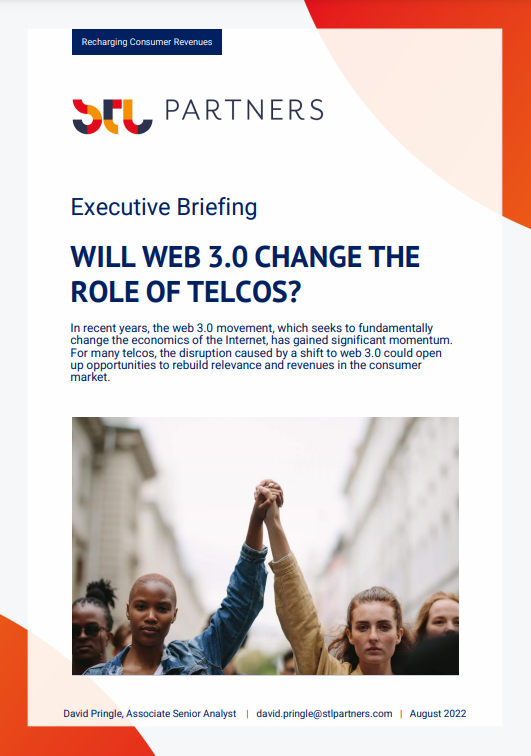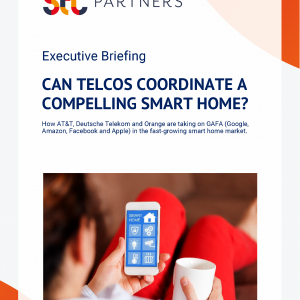Will web 3.0 change the role of telcos?
£3,000.00 excl VAT
In recent years, the web 3.0 movement, which seeks to fundamentally change the economics of the Internet, has gained significant momentum. For many telcos, the disruption caused by a shift to web 3.0 could open up opportunities to rebuild relevance and revenues in the consumer market.
Description
Format: PDF filePages: 51 pagesCharts: 18Author: David PringlePublication Date: August 2022
Table of Contents
- Executive Summary
- Three ways in which telcos can support web 3.0
- Challenges facing web 3.0
- Introduction
- What do we mean by web 3.0?
- Transparency versus privacy
- The money and motivations behind web 3.0
- Can content also be unbundled?
- Smart contracts and automatic outcomes
- Will we see decentralised autonomous organisations?
- Who controls the user experience?
- Web 3.0 development on the rise
- The case against web 3.0
- Are blockchains really the way forward?
- Missteps and malign forces
- Ironing out the wrinkles in blockchains
- Could and should telcos help build web 3.0?
- Validating blockchains
- Telefónica: An interface to blockchains
- Vodafone: Combining blockchains with the IoT
- Conclusions
Table of Figures
- Figure 1: How telcos can help tackle the challenges facing distributed ledgers
- Figure 2: The spatial web and web 3.0 – two sides of the same coin?
- Figure 3: How Web 3.0 differs from web 2.0
- Figure 4: Web 3.0 proponents believe digital power is far too concentrated today
- Figure 5: Web 3.0 proponents argue decentralisation will share value more equitably
- Figure 6: Examples of key players in the web 3.0 value chain
- Figure 7: For content creators, NFTs represent a growing revenue stream
- Figure 8: How web 2.0 and web 3.0 could work together
- Figure 9: How smart contracts work on Ethereum
- Figure 10: OpenSea flip-flopped on its free creation tool following fakes
- Figure 11: Web 3.0 is drawing in more and more developers
- Figure 12: The value of BAYC NFTs has nosedived in 2022
- Figure 13: Ethereum leads other blockchains in terms of transaction fees
- Figure 14: How telcos could use the blockchain to support secure identification
- Figure 15: How telcos can help tackle the challenges facing distributed ledgers
- Figure 16: Deutsche Telekom’s participation in various web 3.0 propositions
- Figure 17: How DT helps the Celo blockchain enables mobile payments
- Figure 18: Telefónica’s TrustOS is designed to provide an interface to blockchains
Technologies and industry terms referenced include: 5G, Bitcoin, blockchain, Celo, Cloud, Coinbase, connectivity, crypto, crypto-currency, cryptocurrencies, DAB devices, DAOs, dapps, decentralisation, decentralised apps, Deutsche Telekom, Digital Asset Broker, digital assets, distributed ledgers, Ethereum, Flow, geopolitical, Hyperscalers, Internet of Things, metaverse, NFTs, non-fungible tokens, open source, OpenSea, policymakers, Polkadot, Polygon, Privacy, security, SIM card, smart contracts, Solana, spatial web, stablecoin, T-Systems MMS, telcos, Telefonica, tokens, trustless, TrustOS, web 2.0, web 2.0 services, web 3.0

